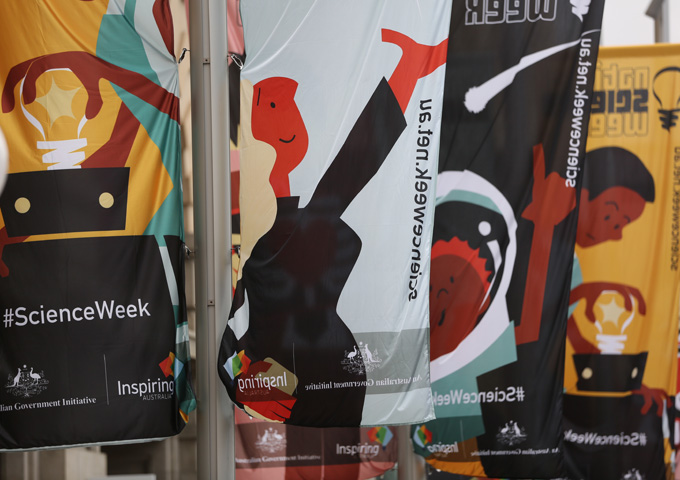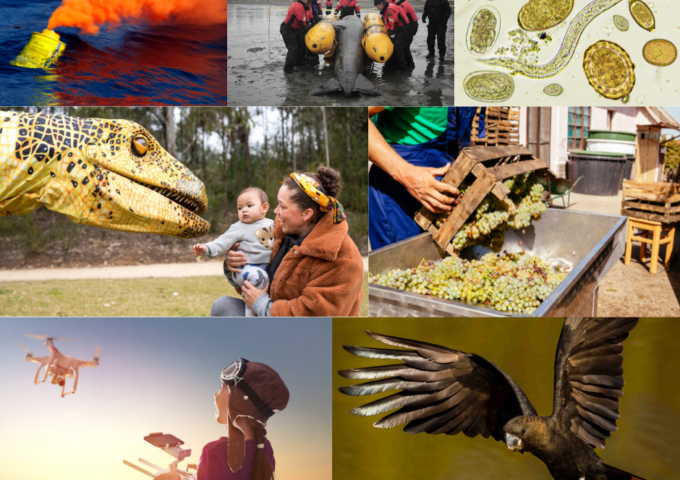

When people ask me where I work, I am thrilled to reply, “The Queensland Museum.”
I normally get an interested noise and the follow-up question, “What do you do there?” to which I respond, “I work on fish parasites.” If I am feeling particularly bold in the conversation, I might even add something like, “I collect DNA from parasite specimens to help describe new species. Did you know that fish are loaded with parasites?” Then usually the topic of conversation changes, especially if we are sitting down to lunch.
But what if someone was not deterred by the mention of parasites? What if someone was really interested in what occurs day-to-day in the fish parasite realm of the Queensland Museum? I shall pretend that you, dear reader, have expressed such an interest, that you have braved your fear of science and dry technical explanations, and I will describe one of the conundrums with which I was recently confronted.
The Queensland Museum has a laboratory dedicated to molecular work, and I am lucky enough to spend some of my time working there. It is a marvellous room full of beakers and centrifuges and excitement, because this is a place where new species are discovered.
Now, whether a scientist is investigating a salamander or a sponge, the same basic techniques are used in this lab, and they centre around a key molecular process: the polymerase chain reaction, or PCR. For anyone who has forgotten high school biology, PCR is a process in which a small fragment of DNA is copied over and over again, until there are enough copies to be sequenced (i.e. for the genetic code to be read) by a machine. A researcher can then use the sequence to decide if they have found a new species. This is the theory, and PCR as a theory makes perfect sense.
In practice, the researcher running a PCR adds tiny amounts of ingredients to a plastic tube not much bigger than a Tic Tac, places it into a machine, and hopes that the reaction works. If it doesn’t, the researcher has to make some educated guesses to start troubleshooting, because you can’t actually see what is going on. The processes are taking place at a molecular level, so they are invisible to the naked eye. When the reaction is complete, each tube looks like it contains a water droplet, whether the PCR worked or not.
However, each tube actually contains a precise balance of reagents and, if the reaction is successful, lots of genetic material, none of which is visible. And this is the amazing thing about molecular work: you add a tiny bit of this, a minute dash of that, and presto, out comes your DNA! If that’s not magic, real and true, occurring every day in biology labs, I don’t know what is. (In fact, molecular biology is as good as any subject taught at Hogwarts!)
Let’s take a moment to consider the DNA going into the reaction. Getting a DNA sample for PCR is usually straightforward. For example, if you want to work with fish DNA, you use a small piece of tissue from a fish, “small” meaning less than 1 gram.
However, what if you want to study parasite DNA? The parasites I work with are tiny, and are embedded in host tissue.
This means that I am adding two kinds of DNA to the tube, host DNA and parasite DNA. Now suddenly the invisible reaction becomes more complicated. Which kind of DNA is going to be copied, the host or the parasite? You can add something to the reaction that should target just the parasite DNA. But with both kinds of DNA bouncing around in the tube, what’s to say the host DNA won’t get in the way and slow the reaction down?
Scientists working on fish never have to worry about this problem! (And they probably heartlessly dispose of any parasites they find!)
So now we come to the conundrum that I faced a few days ago. I added my fish parasite DNA to the tubes, ran the reaction, and found that two samples did not work. I went to my learned supervisor with the results, and he suggested that I run the reaction again with less DNA.
At first blush this seemed counterintuitive to me. My reaction did not work, so I should add less starting material? I was imagining a tube in which there was not enough parasite DNA to begin with, a genetic desert in which the copying proteins searched in vain, purposeless, for material to amplify. So I was a bit sceptical. But I dutifully followed instructions, and to my amazement the second PCR worked beautifully!
I was elated but perplexed. Why had the second reaction worked? Well, perhaps my first analogy was inaccurate. Perhaps the conditions inside the tube were less like a desert, bereft of genetic material, and more like a subway car at rush hour, so crammed with DNA molecules that the copying proteins could barely move at all! In this case a reduction in the starting material would allow the reaction to take place.
I believe that there are three lessons to be learnt here, some of which extend well beyond the boundaries of the molecular lab.
- Too much DNA can be just as bad as too little. Or, put another way, the laboratory is yet another place where sometimes less is more.
- Scientific research often depends on collaboration and discussion with others. Always heed the voice of experience.
- Parasites are tricky little buggers to study. If you want to work on something straightforward, stick with fish!
Guest blog post by Marissa McNamara.






